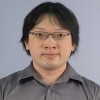
5G is the vision for a future ubiquitous, fully-connected environment. The goal of 5G extends from improving mobile cellular capacity, to supporting massive numbers of IoT devices, virtual reality and highly reliable public safely communications. While 5G encompasses the entire network architecture, wireless access technologies plays an outsized role in realizing last-mile connectivity to the vast majority of future connected devices.
In this talk, I will draw upon some of our recent works that push the envelope in evolving our current broadband infrastructure to 5G. I will highlight two key areas in 5G: unlicensed LTE and large-scale MIMO. These works address two of the most important areas in future broadband networks: the unification of licensed and unlicensed spectrum to provide the coverage and connectivity needed for next-generation broadband; and a massive improvement in spectral efficiency to make the most of the bandwidth that we have today. I will also highlight my experience in prototyping these solutions and the future directions of this work.
Eugene Chai is a researcher in the Mobile Communications and Networking department of NEC Laboratories America. He received his M.S. and Ph.D. from the University of Michigan, Ann Arbor, and his B.S. from the National University of Singapore. His research interest broadly lies in the area of wireless mobile networks, cloud RANs, mobile computing and wireless sensing with a focus on cellular networks and systems. At NEC, his research lies along two directions: (a) improving the performance of 5G systems, specifically LTE, LTE unlicensed and massive MIMO, to support key application verticals such as immersive video and virtual reality, and (b) developing new low-power wireless sensing primitives directed at future IoT and smart spaces applications.
